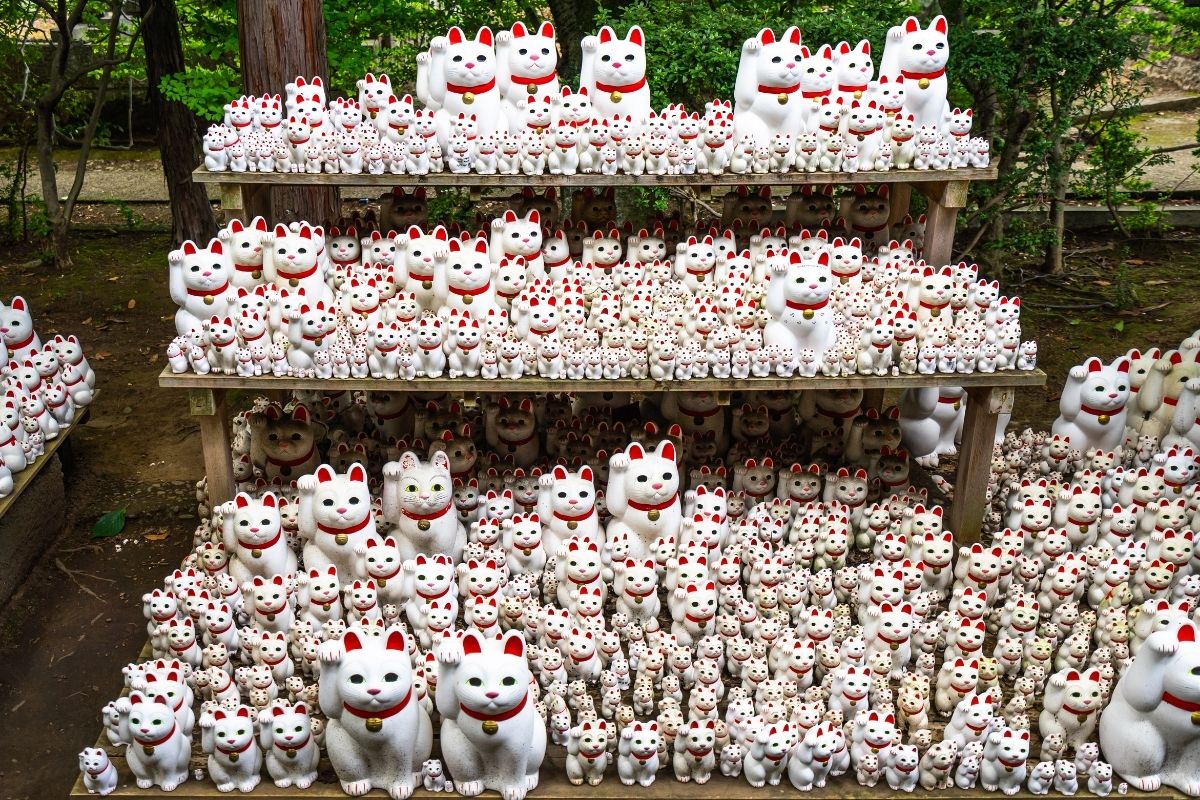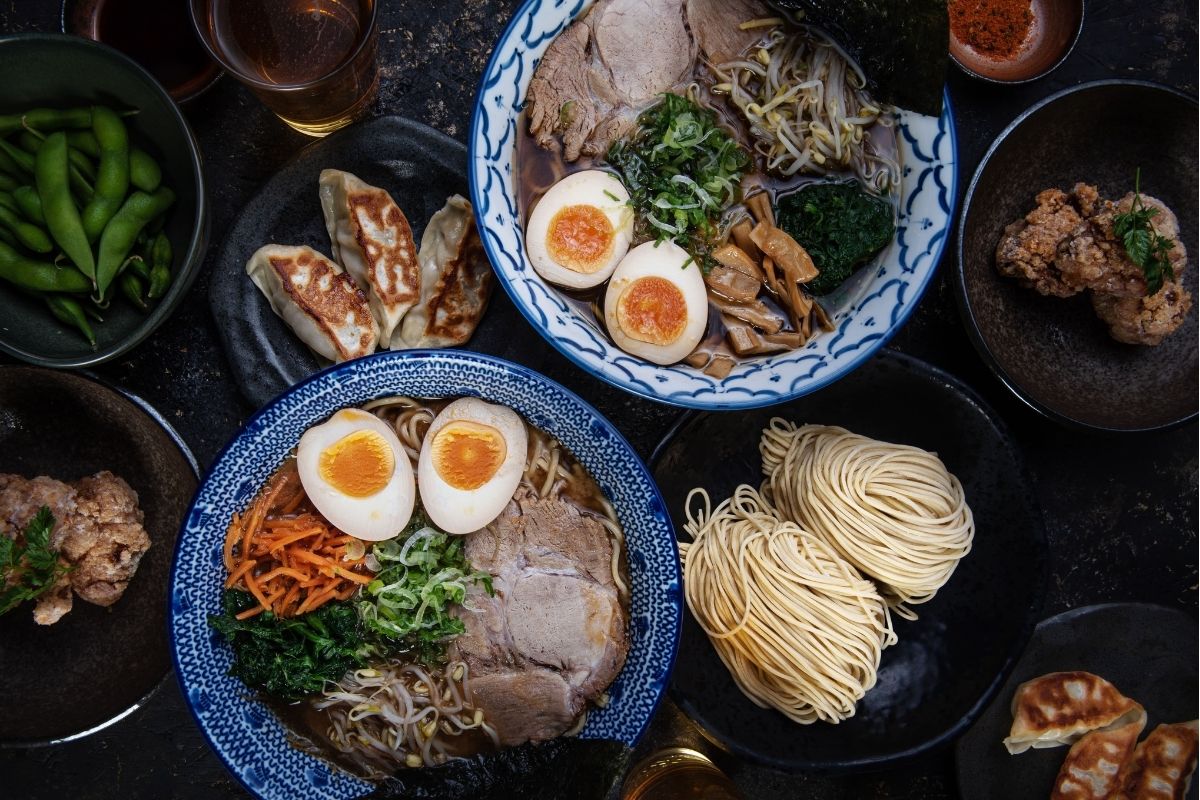
CATS IN JAPANESE CULTURE
The cat is one of the symbols of Japanese culture par excellence. Revered, loved and pampered, this animal is the protagonist of fairy tales and superstitions, legends and religions: a true national institution in Japan .
We should therefore not be surprised to discover that on the Japanese island of Tashirojima the feline population exceeds the human population of residents and visitors. Or if we think that Hello Kitty , one of the most famous cartoon characters in the world, was born in the land of the Rising Sun. Or, again, the very high diffusion of neko cafes - literally cat cafes - where the Japanese (used to living in small apartments that are difficult to share with animals) often spend a few hours in company.

Some cats feed in a Neko Café in Tokyo © Taras Vyshnia
What is the origin of the presence of cats in Japan ? It is believed that these animals arrived from China around 538 AD with the advent of Buddhism : the monks always had at least one cat, to keep the manuscripts safe from mice and believing that those with white fur were celestial creatures, messengers of the divine word . Having emerged from the temples, cats quickly spread throughout the archipelago, honored and sought after not only for their usefulness but as propitiators of luck and for the beauty and elegance of their appearance, becoming protagonists of legends and superstitions .

The Maneki Neko by TENOHA Milano © TENOHA Milano by Anna Daverio
According to legend, in the 17th century in Tokyo there was a dilapidated and ruined temple. The priest who took care of it was very poor and shared everything with his cat. One day, the powerful feudal lord Ii Naotaka of Hikone was passing by and was caught in a thunderstorm. While waiting under the tree for the storm to end, he saw a feline that seemed to invite him to enter the temple; intrigued by that gesture, he approached to observe it better when lightning struck the tree under which he was sheltered. The cat had saved his life, so the daimyo became friends with the priest and contributed his wealth to the development of the building and to the support of the priest and his faithful companion. The temple in question is the renowned Gotokuji Temple of Setagaya , which over the years has become very famous thanks to its main characteristic: the presence of an incalculable number (hundreds, if not thousands) of statues of various sizes depicting maneki neko which in the past have helped the faithful to make wishes or prayers come true.

Via Instagram @ tenoha_milano
In contemporary Japanese society, cats, in addition to being excellent life companions, represent an important part of daily life. In fact, every year February 22nd is Neko No Hi , a national day dedicated to four-legged friends, also celebrated in the rest of the world a few days earlier, on February 17th.

The Wakayama Cat Train © Opasbbb
These animals are the protagonists of many particular stories that really happened in Japan : for example, just a few years ago, the Ferray Corporation, based in Tokyo, hired nine cats free to roam around the offices, so that the employees would be more relaxed and predisposed to team work. However, the best-known feline employee is certainly Tama, the tricolor stationmaster cat from Kishi - in Wakayama prefecture, about two hours south of Kyoto and Osaka - adopted by Toshiko Koyama and hired in 2007 with the role of stationmaster with the task of welcoming passengers upon arrival.

The animated series Mew Mew Tokyo © Lega Nerd
An emblem of the relevance of cats in everyday life and Japanese culture is the large number of characters with feline features that can be found in many recent Manga and Anime , as protagonists or in leading roles. Among the infinite examples we count Doraemon , the famous cat-shaped robot; Luna, Artemis and Diana inside Sailor Moon ; Strawberry Momomiya, the protagonist of Tokyo Mew Mew whose DNA also includes that of a wild cat; Torakiki and Micia, the co-protagonists of the Hello! Spank .
TENOHA E-SHOP
the first Japanese concept store in Europe: online
Colocolo Precia Rollerball - €21.00
Cat stickers Neko omamori - €3.50
Micro PlayerTM Galaga - €69.00
Sebastian Conran Gifu Collection Notebook - €8.00










